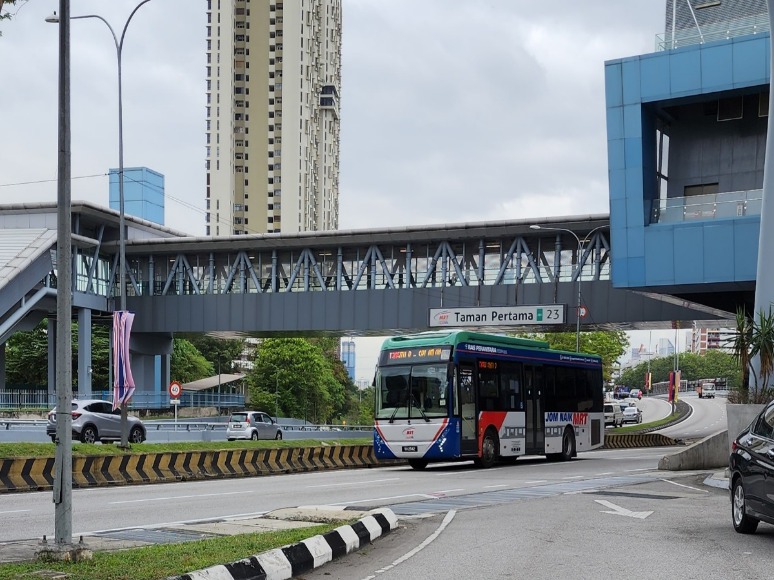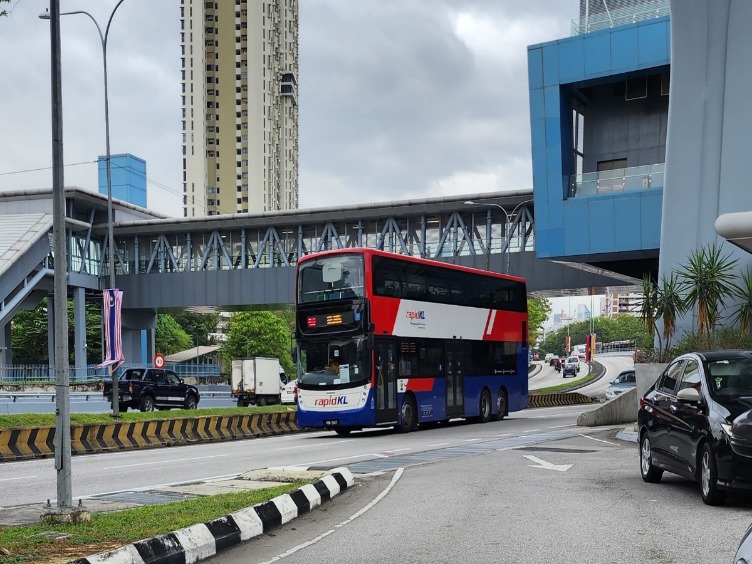Kuala Lumpur
the vibrant city
Kuala Lumpur
The capital of Malaysia, Kuala Lumpur is a vibrant and diverse city that offers a unique blend of cultural heritage, modern infrastructure, and delicious cuisine. As a traveler, there are several things that you need to know before you visit Kuala Lumpur to make the most out of your trip. This guide aims to provide a comprehensive overview of the top things to know before your visit, from the city’s rich history to its top tourist attractions, cuisine, and cultural practices. With this guide in hand, you’ll be able to navigate the city with confidence and experience all that Kuala Lumpur has to offer. So, get ready to explore the best of Kuala Lumpur and immerse yourself in this fascinating city’s sights, sounds, and flavors.
Kuala Lumpur, affectionately known as KL, is the capital city of Malaysia. The name “Kuala Lumpur” translates to “Muddy Confluence,” a reference to its founding at the intersection of the Klang and Gombak rivers, visible just behind Merdeka Square. Over the years, KL has evolved into a significant Asian metropolis, regarded as the center of Malaysia where everything happens. People from all over the country flock to KL for job opportunities and business ventures, while tourists are drawn to its numerous attractions and dining options. Whether you’re here for a short visit or a longer stay, Kuala Lumpur promises an unforgettable experience.
Kuala Lumpur Brief History
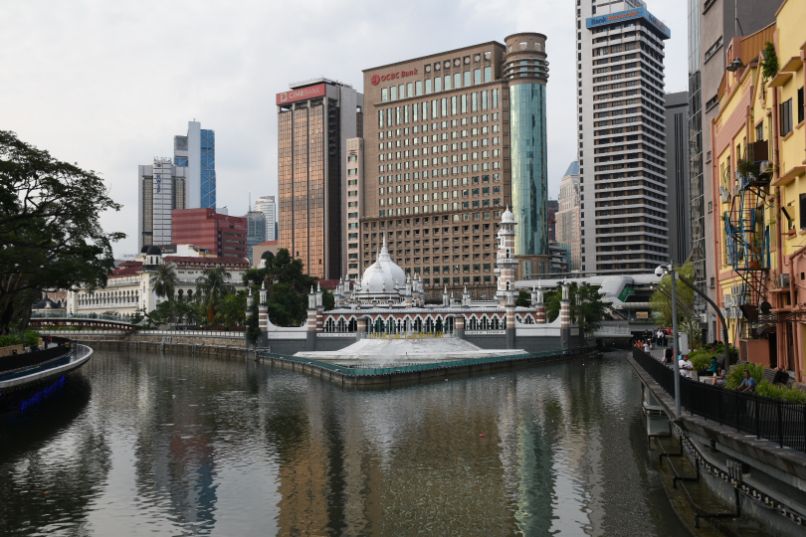
There are three conflicting narratives among academics regarding the true founder of Kuala Lumpur, the capital city of Malaysia.
The first and most widely accepted narrative credits Yap Ah Loy as the founder of Kuala Lumpur.
The second narrative, known as the “Mandailing narrative” and put forth by author Abdur-Razzaq Lubis, argues that Sutan Puasa, a Mandailing nobleman, is the true founder of Kuala Lumpur. The third narrative, often referred to as the “ethno-nationalist narrative” or “government-sanctioned history”, asserts that Raja Abdullah Raja Jaafar founded Kuala Lumpur due to his role in opening tin mines in Ampang.Embracing the “ethno-nationalist narrative”, Kuala Lumpur’s official tourism website declares that Raja Abdullah, the district chief of Klang, founded the city in 1857. According to the website, Raja Abdullah, along with 87 Chinese workers, discovered tin near Ampang, marking the beginning of Kuala Lumpur’s development.
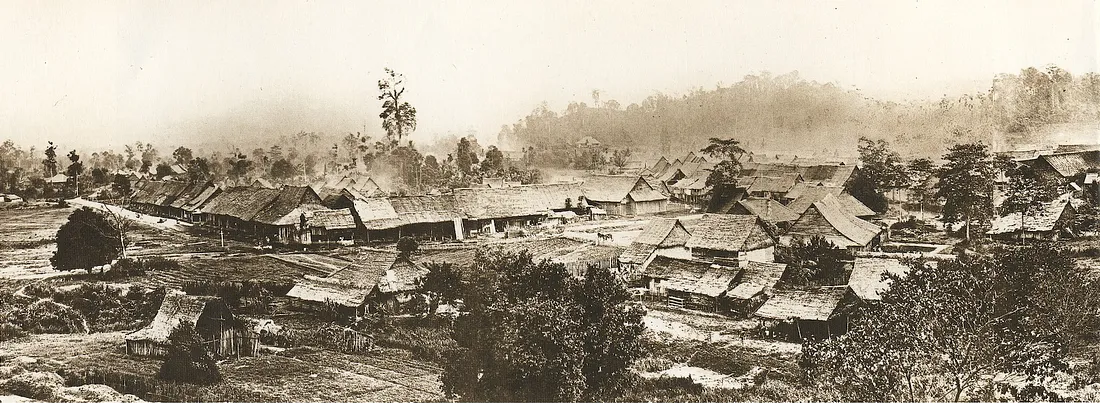
Historical facts
According to SM Middlebrook, a British civil servant, the settlement that would later become known as Kuala Lumpur was established. Gullick further asserts that this trading post serves as the very origin of Kuala Lumpur itself. Additionally, Frank Swettenham, a British colonial administrator who assumed the role of Resident of Selangor in 1882, described Kuala Lumpur in 1872 as a “purely Chinese village, consisting of two rows of adobe-built dwellings, thatched with palm leaves.” American zoologist William Hornaday, who visited Kuala Lumpur in 1878, noted that the “principal streets are lined with Chinese shops.”
By 1880, Kuala Lumpur town had approximately 220 houses, with 70 located in the Malay Quarter. As reported by Barbara Andaya and Leonard Andaya, 79 percent of Kuala Lumpur’s population in 1891 was Chinese. Margaret Shennan, a renowned expert on British Malaya, succinctly summarizes the situation by stating, “Kuala Lumpur was another town created by the enterprise of the Chinese.”
Yap Ah Loy assumed the role of the third Kapitan Cina of Kuala Lumpur following the tenure of Liu Ngim Kong, the second Kapitan Cina, in 1868. His official installation was conducted by Raja Mahdi, the new Malay district chief of Klang, who bestowed upon him a seal of office and the Malay title of “Seri Indra Perkasa Wijaya Bakti” on behalf of Sultan Abdul Samad of Selangor.
Yap Ah Loy played a pivotal role in the reconstruction of Kuala Lumpur after it suffered extensive damage during the Selangor Civil War (1866-1873). He successfully encouraged the Chinese community to rebuild their businesses from the ground up, effectively maintaining law and order in Kuala Lumpur, constructing cart-roads to nearby mines, and recruiting over 4,000 Chinese laborers for his mining and other ventures.
Furthermore, Yap Ah Loy played a significant role in the city’s recovery efforts following a devastating fire in January 1881 and a subsequent flood in December of the same year. According to Swettenham, Yap Ah Loy’s unwavering determination was instrumental in retaining the Chinese population in the region.
Historical evidence unequivocally supports the assertion that Yap Ah Loy was indeed the “Builder of Kuala Lumpur.” As noted by Gullick, Yap Ah Loy was synonymous with Kuala Lumpur up until 1879, earning him the title of Mr. Kuala Lumpur. Gullick further credits Yap Ah Loy with transforming Kuala Lumpur from a humble mining village into the most significant town in the Malay Peninsula. Similarly, J Kennedy, a respected textbook author from the 1960s, lauds Yap Ah Loy for his pivotal role in establishing the township that would eventually become the capital of Malaya.
In contrast, Sutan Puasa, while a prominent Mandailing leader in Ampang, cannot be considered the primary catalyst for the founding and growth of Kuala Lumpur. Historical accounts by Middlebrook and Gullick confirm that Kuala Lumpur originated from a trading post established by Hiu Siew and Ah Sze, not from Sutan Puasa’s residence near the Ampang tin mining settlement. In terms of contributions to Kuala Lumpur’s development, Sutan Puasa, a tin trader and merchant, falls short compared to the multifaceted leadership of Yap Ah Loy, who, as described by Gullick, excelled as a military leader, administrator, and mining tycoon.
In summary, while Sutan Puasa held influence in Ampang, he did not play a central role in the founding and advancement of Kuala Lumpur, especially when juxtaposed with the significant impact and enduring legacy of Yap Ah Loy. Therefore, if we define a “founder” as the originator of a settlement, Hiu Siew may claim that title for Kuala Lumpur. However, if we consider a “founder” as the early builder of a settlement, Yap Ah Loy undoubtedly deserves that distinction.
Where Is Kuala Lumpur Situated?
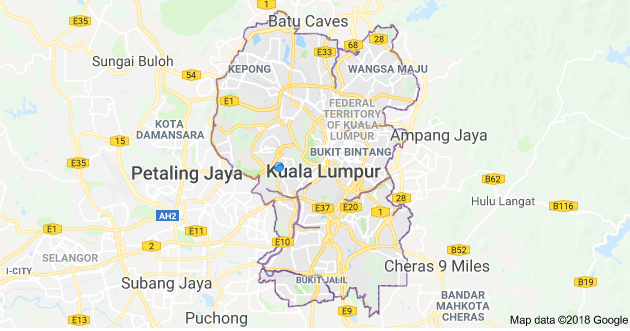
Kuala Lumpur is situated in the southwestern part of the Malay Peninsula, in the central region of Peninsular Malaysia. It is located in the state of Selangor, which surrounds the federal territory of Kuala Lumpur. The city is positioned at the confluence of the Klang and Gombak rivers, and it spans an area of approximately 243 square kilometers (94 square miles). Kuala Lumpur is located about 350 kilometers (217 miles) northwest of Singapore and approximately 45 kilometers (28 miles) east of the coastal city of Port Klang.
Modern Day Kuala Lumpur
In the early 1990s, Prime Minister Mahathir Mohamad unveiled an ambitious initiative known as Vision 2020, with the goal of propelling Malaysia into the ranks of developed nations. With his guidance, the Malaysian government embarked on a transformative journey to revamp and modernize Kuala Lumpur through a series of groundbreaking mega-projects and infrastructure upgrades. Kuala Lumpur emerged as the epicenter of this grand vision, drawing in a multitude of international businesses and tourists with its revamped infrastructure. Over the course of these transformative decades, the Malaysian government successfully executed numerous mega-projects, solidifying its commitment to progress and innovation. Below was few mega projects during Mahathir’s reign:
- Petronas Twin Towers: Completed in 1998, the Petronas Twin Towers quickly rose to claim the title of the tallest buildings in the world.
- Kuala Lumpur International Airport: Inaugurated in 1998, KLIA took over from Subang Airport as Malaysia’s premier international airport, catering to a growing number of domestic and international travelers.
- Multimedia Super Corridor (MSC): The MSC was established as a special economic zone and cutting-edge business hub encompassing Kuala Lumpur and parts of the Klang Valley.
- KL Tower: Standing tall since 1995, the KL Tower is a prominent telecommunications tower renowned for its dual role as an observation deck and communication hub.
- Light Rail Transit: In the 1990s, Mahathir initiated the city’s first LRT line to alleviate congestion and lay the groundwork for future urban transit expansion.
- Bukit Jalil National Sport Complex: In anticipation of the 1998 Commonwealth Games, the Bukit Jalil National Sport Complex was unveiled, solidifying Kuala Lumpur’s status as a premier venue for international sporting events.
- Expressways and Highways: A flurry of highway construction projects during this era significantly enhanced the city’s connectivity and transportation infrastructure.
Top 10 Must-See Attractions
- Petronas Twin Towers: These iconic towers are the tallest twin towers in the world, standing at 452 meters tall. Visitors can take a tour of the towers and enjoy a breathtaking view of the city from the observation deck
- Batu Caves: A popular Hindu shrine, Batu Caves is a limestone hill featuring a series of caves and cave temples. Visitors can climb up the 272 steps to the main cave, which houses a statue of the Hindu deity Lord Murugan.
- Merdeka Square: Also known as Independence Square, this is the historic heart of Kuala Lumpur. It is surrounded by colonial-era buildings and landmarks, including the Sultan Abdul Samad Building and the Royal Selangor Club.
- Kuala Lumpur Bird Park: This is one of the largest covered bird parks in the world, with over 3,000 birds representing more than 200 species. Visitors can walk through the park’s various zones and enjoy close encounters with the birds.
- Central Market: This indoor market is a great place to shop for souvenirs and local handicrafts. Visitors can browse through stalls selling everything from batik textiles to traditional Malay kites.
- KL Tower: Also known as Menara Kuala Lumpur, this communications tower offers a panoramic view of the city from its observation deck. Visitors can also dine in the tower’s revolving restaurant.
- National Mosque of Malaysia: This is the largest mosque in Malaysia and can accommodate up to 15,000 worshippers. Non-Muslim visitors are welcome to take a tour of the mosque and learn about Islamic architecture and culture.
- Thean Hou Temple: This is one of the largest and most ornate Chinese temples in Southeast Asia. It is dedicated to the goddess Tian Hou and features traditional Chinese architecture and artwork.
- Jalan Alor: This street is known for its vibrant night market, which offers a wide range of street food and outdoor dining options. Visitors can sample local dishes like satay, laksa, and nasi lemak while enjoying the lively atmosphere.
Where To Stay In Kuala Lumpur: A Guide To The City’s Neighborhoods
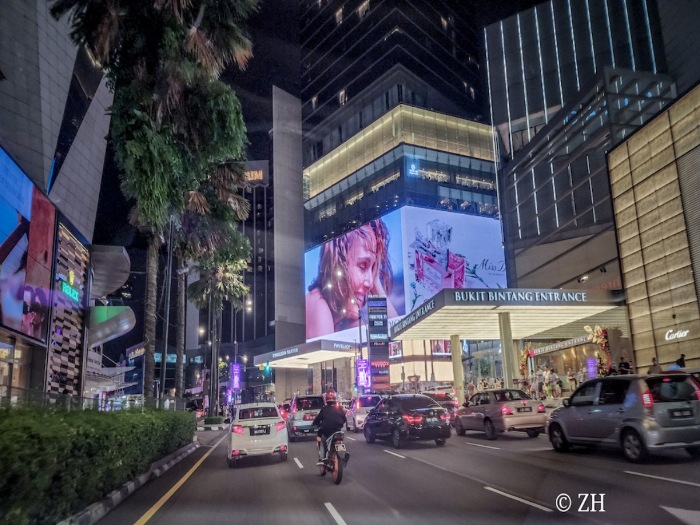
Kuala Lumpur is a vibrant city that offers a variety of accommodation options to suit all preferences and budgets. From luxurious hotels to budget-friendly hostels, the city has it all. However, with so many neighborhoods to choose from, it can be overwhelming for travelers to decide where to stay.
Here is a guide to some of the most popular neighborhoods in Kuala Lumpur:
When choosing where to stay in Kuala Lumpur, consider your budget, preferred neighborhood, and proximity to the attractions you want to visit. No matter where you choose to stay, you’ll be sure to have an unforgettable experience in this vibrant and diverse city.
Getting Around In Kuala Lumpur
- Mass Rapid Transit (MRT): This is a modern train system that covers much of the city and offers a fast and reliable way to get around Kuala Lumpur.
- Light Rail Transit (LRT): This is another train system that is more extensive than the MRT and covers areas that are not accessible by the MRT.
- Bus: Kuala Lumpur has a network of buses that is quite extensive and offers an affordable way to get around the city.
- Monorail: The Kuala Lumpur Monorail is a short train line that serves some of the major tourist areas in the city.
- Taxi: Taxis are widely available in Kuala Lumpur, and they are a convenient option for getting around the city, although they can be more expensive than other transportation options.
- Ride-hailing services: Services like Grab and MyCar are available in Kuala Lumpur and offer an alternative to traditional taxis.
- Walking: Walking is a great way to explore the city, especially if you want to take your time and see the sights at your own pace.
Transportation Tips:
- Purchase a Touch ‘n Go card for seamless travel on public transport.
- Plan your itinerary around peak hours to avoid traffic congestion
Dining in Kuala Lumpur
Kuala Lumpur boasts an eclectic dining scene with options ranging from street food stalls to fine dining restaurants:
Must-try Dining Spots:
- Jalan Alor: Famous for its street food stalls offering local delicacies like satay and char kway teow.
- Kg. Baru: for variety of Malay authentic street foods
- Pavilion KL Food Court: A variety of dining options under one roof.
- Lot 10 Hutong
- Little India (Brickfields: Experience authentic Indian cuisine with vibrant flavors.
Shopping in Kuala Lumpur
Kuala Lumpur is renowned as a shopping paradise. The central district features an impressive array of shopping malls. Amongst the popular one’s:
- Suria KLCC- located at the base of Petronas Towers-luxury designers brands
- Pavillion- luxury designers brands, fine dining
- Berjaya Times Square- extensive retail outlets and indoor amusement park
- Low Yat Plaza- mainly electronics and gadgets
Is Kuala Lumpur Safe For Tourists? Tips For Staying Secure
Kuala Lumpur is a bustling city with a diverse culture, making it a popular destination for tourists from all over the world. While it is generally safe for travelers, it’s important to take precautions to ensure your safety during your stay. Here are some tips for staying secure in Kuala Lumpur.
- Be aware of your surroundings: Like any big city, Kuala Lumpur has its fair share of pickpockets and scammers. Be aware of your surroundings and keep an eye on your belongings. It’s also important to be cautious when accepting help or directions from strangers.
- Use reputable transportation: Avoid unlicensed taxis or drivers, especially at night. Stick to reputable taxi companies, ride-sharing services, or public transportation options like the train or bus.
- Keep your valuables secure: Leave your expensive jewelry and valuables at home, and keep important documents like your passport and credit cards in a secure location. Consider carrying a money belt or a small bag that can be worn close to your body.
- Stay in well-lit areas: If you’re out at night, stick to well-lit areas and avoid alleys or quiet streets. It’s also important to be cautious of your surroundings and to trust your instincts if you feel uncomfortable.
- Research your accommodations: When booking your accommodations, do your research to find a reputable and secure hotel or guesthouse. Look for places with good reviews, security features like cameras or security guards, and a safe in your room for storing valuables.
- Be prepared for emergencies: Have a plan in place in case of an emergency, including the location of the nearest hospital, emergency services number, and contact information for your embassy.
Kuala Lumpur Climate
Kuala Lumpur has a tropical rainforest climate, which means that it is hot and humid throughout the year. The city experiences two monsoon seasons, one from October to March, and another from April to September. During these periods, heavy rainfall is common, and the humidity can be particularly intense. The city also experiences occasional haze from forest fires in neighboring countries.
Temperature:
Temperatures in Kuala Lumpur are consistently high, with an average daily temperature of around 32°C (90°F) throughout the year. However, the city’s location near the equator means that there is little variation in temperature from month to month.
What to Pack:
Due to the warm and humid weather, it’s recommended to pack lightweight, breathable clothing made from natural fibers like cotton or linen. Shorts and t-shirts are appropriate for most situations, but it’s also important to bring clothing that covers the arms and legs to protect against mosquitoes, particularly during the rainy season. It’s also a good idea to bring an umbrella or rain jacket, as heavy rain is common during the monsoon season.
In addition to clothing, there are a few other items that are useful to pack for a trip to Kuala Lumpur. Sunscreen and a hat to protect against the strong equatorial sun are important, as is insect repellent to protect against mosquitoes. It’s also recommended to bring comfortable walking shoes, as there is a lot of walking involved when exploring the city.
Staying Connected: Internet Access In Kuala Lumpur
Staying connected is important for travelers in order to stay in touch with family and friends, access information about the local area, and post updates on social media. Here are some key details about internet access in Kuala Lumpur:
- Wi-Fi: Most hotels, restaurants, cafes, and shopping centers in Kuala Lumpur offer free Wi-Fi access. Some may require a password or have time limits, so it’s always a good idea to check before using.
- SIM Cards: Purchasing a local SIM card is a popular option for travelers who need to stay connected on the go. There are several providers to choose from, including Maxis, Digi, and Celcom, and SIM cards can be purchased at the airport or at mobile phone stores throughout the city.
- Mobile Data: With a local SIM card, travelers can access mobile data and stay connected even when outside of Wi-Fi zones. Packages and rates vary by provider, so be sure to compare options before making a purchase.
- Internet Cafes: Internet cafes are still available in Kuala Lumpur, but they are not as common as they once were. They can be found in some shopping centers and tourist areas and may offer hourly rates or package deals.
- Public Wi-Fi: Public Wi-Fi is available in some areas of Kuala Lumpur, such as parks and public transportation hubs. However, it’s important to be cautious when using public Wi-Fi as it may not be secure and can put personal information at risk.
Cultural Do’s & Dont’s
Do’s
- Greet people with a smile and a handshake. Malaysians are known for being friendly and welcoming, and a smile can go a long way in making a good first impression.
- Dress appropriately. Malaysia is a predominantly Muslim country, and conservative dress is expected in public places. It is recommended to dress modestly and cover shoulders, chest, and legs, especially when visiting religious places such as mosques and temples.
- Remove shoes before entering a home or place of worship. It is customary to remove shoes (and sox) before entering homes or religious sites as a sign of respect.
- Try the local cuisine. Malaysian food is a delicious blend of flavors and cultural influences. Embrace the local food scene and try out traditional dishes such as nasi lemak, laksa, and satay.
- Respect religious customs. Kuala Lumpur is home to a diverse range of religions, including Islam, Buddhism, Hinduism, and Christianity. Be respectful of local customs and traditions when visiting religious sites and participating in religious events
Dont’s
- Public displays of affection. Public displays of affection are not culturally acceptable in Malaysia. It is best to refrain from kissing or hugging in public.
- Disrespect religious customs. It is important to respect religious customs and practices in Malaysia and avoid behaviors that may be considered disrespectful, such as taking photographs of religious ceremonies or wearing inappropriate clothing to religious sites.
- Touch people’s heads. In Malaysian culture, the head is considered the most sacred part of the body. Touching someone’s head without permission is considered disrespectful. Remember to avoid putting your legs on the front car/bus driver headrest as that is a BIG No! here.
- Always respect elderly people.
Conclusion
To make the most of your trip, be sure to plan your itinerary ahead of time and consider the best time to visit based on your preferences. Whether you’re a culture buff, foodie, or nature lover, there are plenty of activities and attractions to suit your interests.
But no matter what you do, don’t forget to take some time to soak up the local atmosphere and interact with the friendly locals. Their warm hospitality and eagerness to share their culture and traditions are what make Kuala Lumpur truly unique and unforgettable.
I hope this guide has inspired you to explore and discover all that Kuala Lumpur has to offer. Safe travels and enjoy your trip to this amazing city!


